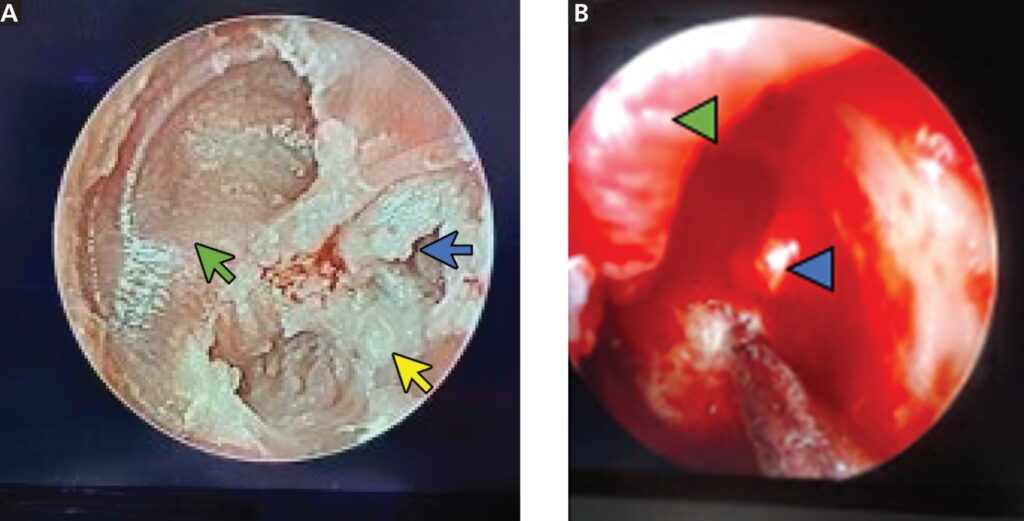Understanding Cholesteatoma: Implications in Otolaryngology and Beyond


A recent case study presents a comprehensive view of cholesteatoma, a potentially severe condition affecting the ear. This condition, marked by a buildup of keratinizing squamous epithelium, can lead to significant complications if untreated. The article highlights a specific case of a 15-year-old patient with a history of ear infections, illustrating the clinical presentation, diagnosis, and management strategies for cholesteatoma. This summary aims to distill the key aspects of the study, providing valuable insights for physicians in understanding, diagnosing, and treating this condition.
Key Points:
- Patient Case: A 15-year-old female with a history of recurrent otitis media and previous ear surgeries presented with left-sided conductive hearing loss, leading to the diagnosis of cholesteatoma.
- Diagnosis: CT scans showed a retracted tympanic membrane with erosion of the incus, typical of retraction cholesteatoma.
- Treatment: The patient underwent successful tympanoplasty and ossicular chain reconstruction, which improved her hearing thresholds.
- Recurrence and Monitoring: Cholesteatoma has a recurrence rate of 4.6% and a residual disease rate of 5.4%, necessitating continued monitoring post-treatment.
- Types of Cholesteatoma: Distinguished into congenital and acquired forms, the latter often related to eustachian tube dysfunction, recurrent middle ear infections, or previous surgeries.
- Symptomatology: Conductive hearing loss is a common symptom, with potential progression to sensorineural hearing loss if the inner ear is involved.
- Clinical Presentation: Patients may show symptoms resembling ear infections, with abnormal tympanic membrane appearance, potentially masking the underlying cholesteatoma.
- Referral Criteria: Early referral to an otolaryngologist is crucial for patients with recurrent middle ear issues, abnormal ear examinations, or symptoms unresponsive to conventional treatment.

In a nationwide case-control study of first-time cholesteatoma surgeries in Sweden, the risk of cholesteatoma surgery for individuals with a first-degree relative treated for the disease was almost 4 times increased, but few cases were exposed.
More in Otolaryngology
 PATIENT EDUCATION
PATIENT EDUCATION  OBESITY/WEIGHT MANAGEMENT
OBESITY/WEIGHT MANAGEMENT  EXERCISE/TRAINING
EXERCISE/TRAINING  LEGAL MATTERS
LEGAL MATTERS  GUIDELINES/RECOMMENDATIONS
GUIDELINES/RECOMMENDATIONS